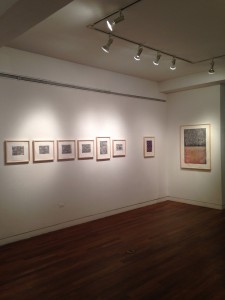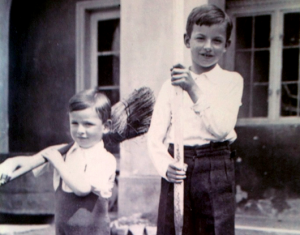There was a buzz on Broadway and 116th on Monday, October 2, as hundreds of ticket holders waited to get into Miller Theatre for an event called simply, “An informal performance on the art of dance.” An understated title, but those familiar with dancer, director, arts ambassador, and visionary Arthur Mitchell ’16HON knew the evening was bound to be extraordinary. And it was.
In 1955, Mitchell joined the New York City Ballet under the direction of George Balanchine and Lincoln Kirstein. He was the first African-American principal dancer at NYCB or any major American ballet company. Later, he founded and directed the acclaimed Dance Theatre of Harlem.
Mitchell, a self-described “political activist through dance,” recently donated his archive to Columbia’s Rare Book and Manuscript Library. An exhibition, “Arthur Mitchell: Harlem’s Ballet Trailblazer,” will be on view at the Wallach Art Gallery at the Lenfest Center for the Arts from January 13-March 11, 2018.
As the program began, award-winning actress Cicely Tyson ’14HON described meeting her friend Mitchell in the 1950’s. At the time, he predicted they would work together someday—and here they were, both Columbia honorary degree recipients, together at the University more than 60 years later.
Mitchell remained onstage throughout the evening— in a Columbia blue leather chair— watching dancers recreate highlights from his career. He engaged the audience with anecdotes about growing up in Harlem, his choreography, his travels, and his friendships with figures like Nelson Mandela. Dancers from Alvin Ailey American Dance Theatre, American Ballet Theatre, Dance Theatre of Harlem, and the New York City Ballet had accepted Mitchell’s invitation to perform and each paid tribute, including the renowned Alicia Graf Mack ’03GS.
The evening included choreography by George Balanchine (Four Temperaments and Agon), Alvin Ailey (“Vortex” from The River), and Mitchell himself (Balm and Gilead).
Agon, a 1957 Balanchine pas de deux, drew attention when it premiered in the pre-Civil Rights era, featuring African-American dancer Mitchell and white ballerina Diana Adams. According to Mitchell, “My skin color against hers became part of the choreography.”
The roles were danced here by ABT’s Calvin Royal III and NYCB’s Unity Phelan. According to a dance critic from Pointe, “The two dancers…gave an electric and intense performance. Afterwards, Mitchell turned to the audience and smiled, ‘I would say it’s in good hands.'”
He was talking about Agon, but the same may be said about Arthur Mitchell’s legacy, archived at Columbia for the ages.
—
Tracy Quinn ’14SPS, senior director for strategic communications, first saw Arthur Mitchell dance in her hometown of Saratoga Springs, NY—the summer home of the New York City Ballet.

 and Esperanza, Smith employs a favorite printmaking technique, etching using two acid-resistant materials, aquatint and soap ground, to create irregular, subdued tones of gold, orange, pink, and blue-purple. A clever use of holographic paper transforms the print into a collage of shimmering raindrops that does, as its title suggests, make for a good day.
and Esperanza, Smith employs a favorite printmaking technique, etching using two acid-resistant materials, aquatint and soap ground, to create irregular, subdued tones of gold, orange, pink, and blue-purple. A clever use of holographic paper transforms the print into a collage of shimmering raindrops that does, as its title suggests, make for a good day. d when you’re there, please straighten out the pictures; they’re always crooked.
d when you’re there, please straighten out the pictures; they’re always crooked.
 ight. He shared firsthand knowledge of what it takes to make it in the startup world. Prior to Industrious, Hodari was the co-founder and CEO of Kepler, a rapidly growing experimental university that Scientific American called a “daring global experiment” to bring “top-tier instruction to the neediest parts of the planet.”
ight. He shared firsthand knowledge of what it takes to make it in the startup world. Prior to Industrious, Hodari was the co-founder and CEO of Kepler, a rapidly growing experimental university that Scientific American called a “daring global experiment” to bring “top-tier instruction to the neediest parts of the planet.”










